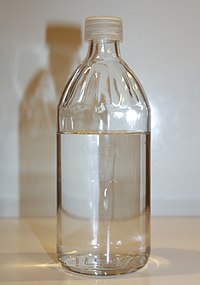
Photo from wikipedia
Our previous study found that a salt marsh in eastern China can act as a large CH3Cl sink. One striking finding of this previous study was a strong relationship between… Click to show full abstract
Our previous study found that a salt marsh in eastern China can act as a large CH3Cl sink. One striking finding of this previous study was a strong relationship between high-ambient CH3Cl concentrations and fluxes during the growing season. Moreover, the high-ambient CH3Cl concentration was likely to be related to local biomass burning. However, implementation of biomass burning prohibition policies has effectively reduced biomass burning. Therefore, we predicted that the prohibition of biomass burning would alter CH3Cl concentration and flux within the eastern Chinese coastal salt marsh. In this study, we used static flux chambers to measure CH3Cl fluxes in the early (July of 2004 and January of 2005) and middle-late stages (August and December of 2013) of biomass burning prohibition of along a creek and vegetation transects of the salt marsh. After implementation of the biomass burning prohibition, the concentration and flux of CH3Cl directly related to biomass burning changed remarkably. During the middle-late stage of prohibition, the initial CH3Cl concentration was significantly reduced compared to during the early stage of prohibition. Reductions in atmospheric CH3Cl concentration were especially apparent during the growing season, when biomass burning was prohibited and atmospheric CH3Cl concentration dropped to levels nearly as low as the Northern Hemisphere background concentration. Atmospheric CH3Cl concentration significantly varied throughout the salt marsh, with the highest concentrations appearing over the inland areas and mudflat and lower values occurring over the middle locations. This spatial distribution of CH3Cl may have been directly related to the existence and distribution of potential CH3Cl sources, such as coastal seawater, terrestrial biomass burning, and senescent and decaying aboveground biomass. These changes in initial CH3Cl concentration caused by the biomass burning prohibition may eventually lead to shift in the salt marsh from the tendency to act as a CH3Cl sink to the tendency to act as a CH3Cl source. When the initial atmospheric CH3Cl concentration was high, the vegetation stands acted as CH3Cl sinks. Conversely, they became CH3Cl sources. Therefore, we conclude that the biomass burning prohibition altered the ecosystem–atmosphere exchange of CH3Cl within the studied eastern Chinese coastal salt marsh.
Journal Title: Environmental Science and Pollution Research
Year Published: 2017
Link to full text (if available)
Share on Social Media: Sign Up to like & get
recommendations!